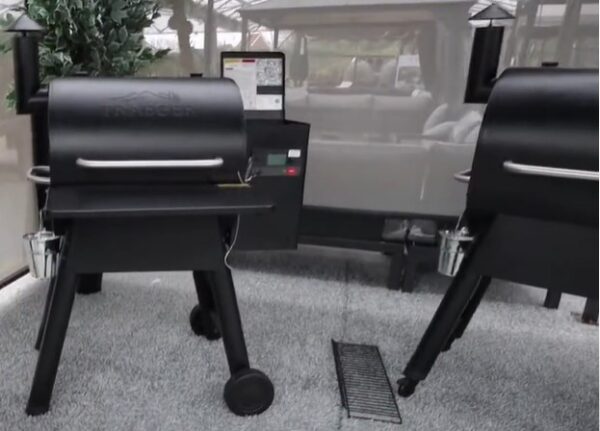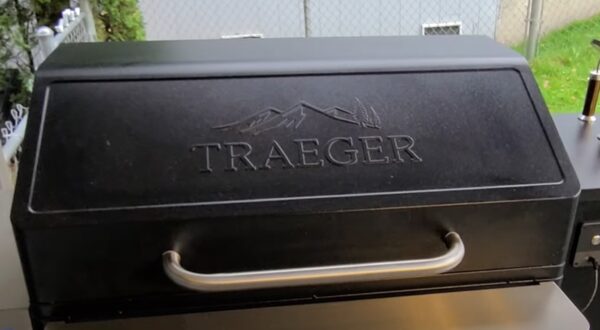Nothing is more frustrating than when your charcoal won’t light.
It can be disheartening, especially when you have gone to the trouble of prepping and organizing everything for a barbecue.
If you are having this issue, don’t worry; it happens to the best of us! We’ve compiled 10 proper fixes that will help get your fire roaring in no time so you can enjoy your delicious meal.
My Charcoal Won’t Light

1. Not Enough Charcoal
If you are having trouble getting your charcoal to light, it could be due to not using enough of it.
Charcoal needs a certain amount of heat to ignite, and if there isn’t enough charcoal, the temperature won’t be high enough for it to light.
Fix
To make sure you have enough coal for your fire, use two layers of charcoal with each layer being twice as thick as the one underneath.
This will help ensure you have enough fuel and the correct temperature for ignition.
Additionally, be sure to use a chimney starter or an electric starter when lighting your charcoal so that you can get an even temperature throughout the pile and all the pieces are equally ignited.
2. Incorrect Air Flow
The first issue that could be causing your charcoal to not light is not having enough.
Charcoal needs to be packed tightly together in order to light and burn properly, and if there is too much space between coals, they will not catch fire.
Fix
To fix this issue, make sure the charcoal is packed tightly together and has a fair amount of oxygen circulating around it.
Additionally, you can add more charcoal if needed to fill up any gaps in the pile.
Finally, use lighter fluid or other combustible material such as paper or cardboard as kindling to help get the fire going.
3. Charcoal Is Wet
One of the primary reasons why your charcoal won’t light is because it is wet.
Charcoal needs to be kept dry in order for it to properly burn. If there has been rain or moisture in the environment, the charcoal can become damp and unable to produce a flame.
Fix
This can be remedied by replacing wet charcoal with dry ones and allowing for the new charcoal to completely dry out before attempting to use it.
Additionally, keeping charcoal sealed in an airtight container when not in use can prevent them from getting wet and remaining dry until you are ready to use them.
4. Charcoal Has Been Contaminated
Contamination of charcoal can be caused by a number of different factors, including exposure to moisture, improper storage or handling, or even a manufacturing defect.
When contaminated, charcoal is much harder to light and will often produce poor quality smoke or other unpleasant odors.
Fix
To prevent contamination and ensure a successful lighting process, it’s important to store charcoal in a dry place away from any moisture sources.
Additionally, if the charcoal has been sitting for some time it’s best to inspect it for signs of mold or other contaminants before attempting to light it.
If contaminated, it’s best to discard the charcoal and purchase fresh product from a reputable supplier instead.
5. Your Lighter Fluid Is Old or Bad
When attempting to light the charcoal, one of the reasons why it may not light could be that your lighter fluid is either old or bad.
Fix
If this is the case, it’s important to check the age and quality of your fluid before you try to light the charcoal.
Old and expired lighter fluid can cause a variety of problems including difficulty in igniting, uneven heat distribution, and unreliable cooking temperatures.
When dealing with old or bad lighter fluid, the best solution is to replace it with fresh fluid specifically designed for lighting charcoal grills.
Fresh lighter fluid should be colorless and odorless and should ignite quickly when exposed to a match or spark.
6. Using Too Much Lighter Fluid
When lighting charcoal for a BBQ, many people make the mistake of using too much lighter fluid.
This can lead to an overpowering smell and flavor on your food, as well as making it take longer for the coals to reach optimal cooking temperatures.
Fix
It is important to use only enough lighter fluid so that it reaches all of the pieces of charcoal evenly.
This means placing a small amount in a circle or line across the bottom of the grill to ensure that each piece is exposed and ignited.
A single match should be sufficient to light the entire pile if done correctly.
To prevent flare-ups from too much lighter fluid, keep a spray bottle with water handy while grilling.
A quick spritz of water over any flames that appear will help put them out quickly and keep your food from becoming burned or charred.
7. Poorly Arranged Coals
Poorly arranged coals can be another factor as to why your charcoal won’t light.
If the coals are spread too far apart, or if there isn’t enough of them, it will be hard for the flame to reach all the charcoal and ignite it.
Fix
Make sure that when arranging the coal you spread them out in an even layer, with enough of them to cover the space you are trying to light.
Try your best to make sure that all the pieces are touching each other; this is integral for proper ignition.
Additionally, try using a fire starter such as paper or kindling wood to help light the coal more effectively.
8 . Charcoal Is Too Close to Each Other
When it comes to lighting charcoal for your grill, one of the most common mistakes people make is packing the charcoal too tightly together.
This can prevent oxygen from getting between the pieces of charcoal and make it difficult for the fuel to ignite.
Fix
To get your charcoal lit, you’ll need to spread them out across the bottom of your grill or smoker so that each piece is at least an inch apart.
Doing this should create more air pockets which will provide more oxygen to help the charcoal light faster and stay lit longer.
It’s also a good idea to purchase high-quality lump charcoal rather than briquettes as they will be easier to light and burn hotter and brighter.
9 . Charcoal Lighter Cubes
Using charcoal lighter cubes is a great way to quickly and easily light your charcoal for barbecuing.
Charcoal lighter cubes are small, compressed cubes of highly flammable paraffin wax that burn hot and long enough to light up your charcoal.
Before lighting the grill, just place a few of these cubes onto the charcoal or briquettes and light them with a match or lighter.
The cubes will create an even heating temperature as well as produce less smoke than regular fluid fire starters.
Additionally, they are odorless and tasteless so you won’t have any strange smells or tastes coming from your food.
Charcoal Lighter Cubes are also convenient in that they can be stored anywhere without fear of leaking or evaporating like liquid fire starters do.
Lastly, they provide the perfect balance between speed and convenience when it comes to lighting your charcoal!
10 . Not giving it enough time
When starting a charcoal fire, it is important to give the charcoal enough time to heat up and ignite.
Charcoal briquettes need at least 15 minutes of time to become hot and be ready to light.
When the briquettes are gray with a tinge of red in the center, they are ready.
If you don’t give them enough time to properly heat up, they will not get hot enough for the lighter fluid or chemical starter cubes to take effect.
Fix
If you try to light them too soon, or without giving them enough time, they will stay cool and not catch fire.
To ensure that your charcoal is properly heated, allow sufficient time for heating before attempting to light your briquettes – 15 minutes should be sufficient.
Conclusion
It can be a real bummer when you’ve gone to all the trouble of getting your charcoal ready for grilling, only to find that it won’t light.
But don’t worry – there are plenty of ways to get those coals burning! The most common cause is damp or wet charcoal, so make sure you check this first before trying any other methods.
If that doesn’t work then try using lighter fluid or an electric starter; both will help ignite the coal without having to resort to matches.
Additionally, if none of these solutions seem effective and your grill has been in storage for some time, consider replacing your charcoal with something fresher as old briquettes may have lost their flammability over time.
With just a few simple steps and tricks up your sleeve, you’ll soon be enjoying delicious grilled food on warm summer days!
FAQs
What to do when charcoal won’t light?
If your charcoal won’t light, make sure that you are using a charcoal starter or lighter fluid to ignite it. Then check if you need more fuel or the temperature is too low.
Finally, ensure there is enough air circulation and oxygen to help the coals burn properly. You may also want to stir and rearrange them for even burning.
Additionally, make sure to never leave un-ignited fuel in your grill as this can be dangerous.
What causes charcoal not to burn?
The main cause of charcoal not to burn is when there is insufficient air and oxygen available in the environment.
This can be due to inadequate fuel or a low temperature, which will prevent it from reaching the right temperatures for combustion.
How come my charcoal won’t stay lit?
The most common reason why charcoal won’t stay lit is due to inadequate air and oxygen circulating around the coals.
How do you make charcoal light faster?
To make charcoal light faster, you should use a charcoal starter or lighter fluid to ignite it.
Additionally, ensure there is enough air circulation and oxygen for the coals to burn properly.
You may also want to stir and rearrange them for even burning so that all the coals reach their ignition temperature at the same time.
Kamado Joe Not Getting Hot Enough
Nexgrill Not Getting Hot Enough


